
François Boucher was a French painter, draughtsman and etcher, who worked in the Rococo style. Boucher is known for his idyllic and voluptuous paintings on classical themes, decorative allegories, and pastoral scenes. He was perhaps the most celebrated painter and decorative artist of the 18th century.

The Académie royale de peinture et de sculpture was founded in 1648 in Paris, France. It was the premier art institution of France during the latter part of the Ancien Régime until it was abolished in 1793 during the French Revolution. It included most of the important painters and sculptors, maintained almost total control of teaching and exhibitions, and afforded its members preference in royal commissions.
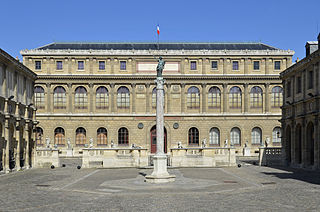
The Beaux-Arts de Paris, formally the École nationale supérieure des beaux-arts, is a French grande école whose primary mission is to provide high-level fine arts education and training. The art school, which is part of the Paris Sciences et Lettres University, is located on two sites: Saint-Germain-des-Prés in Paris, and Saint-Ouen.

In 1671 an argument broke out in the French Royal Academy of Painting and Sculpture in Paris about whether drawing or color was more important in painting. On one side stood the Poussinists who were a group of French artists, named after the painter Nicolas Poussin, who believed that drawing was the most important thing. On the other side were the Rubenists, named after Peter Paul Rubens, who prioritized color. There was a strong nationalistic flavour to the debate as Poussin was French but Rubens was Flemish, though neither was alive at the time. After over forty years the final resolution of the matter in favor of the Rubenists was signalled when Antoine Watteau's The Embarkation for Cythera was accepted as his reception piece by the French Academy in 1717. By that time the French Rococo was in full swing.
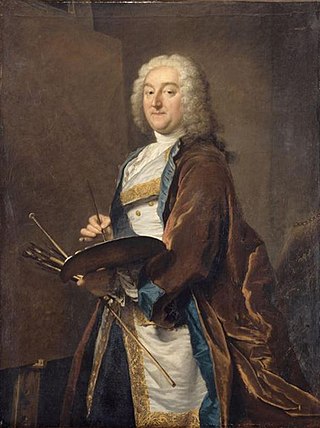
Jean-François de Troy was a French Rococo easel and fresco painter, draughtsman and tapestry designer. One of France's leading history painters in his time, he was equally successful with his decorative paintings, genre scenes and portraits. He was the inventor of the tableaux de modes, which attempted to provide a spirited portrayal of contemporary fashions, pastimes and manners.

Fête galante is a category of painting specially created by the French Academy in 1717 to describe Antoine Watteau's (1684–1721) variations on the theme of the fête champêtre, which featured figures in ball dress or masquerade costumes disporting themselves amorously in parkland settings. When Watteau applied to join the French academy in 1717, there was no suitable category for his works, so the academy simply created one rather than reject his application. His reception piece was the Embarkation for Cythera, now in the Louvre.
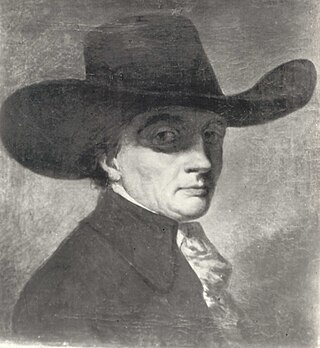
Jean-Pierre Norblin de La Gourdaine was a French painter, draughtsman, engraver and caricaturist. Born in France, from 1774 to 1796 he resided in Poland.

Nicolas Vleughels was a French painter. In his role as director of the French Academy in Rome, which he held from 1724 until his death, he played a pivotal role in the interchange between France and Italy in the first third of the 18th century.

The Embarkation for Cythera is a painting by the French painter Jean-Antoine Watteau.

Anne Vallayer-Coster was a major 18th-century French painter best known for still lifes. She achieved fame and recognition very early in her career, being admitted to the Académie Royale de Peinture et de Sculpture in 1770, at the age of twenty-six.

Joseph Parrocel was a French Baroque painter, best known for his paintings and drawings of battle scenes.
The Académie de Saint-Luc was the guild of painters and sculptors set up in Paris in 1391, and dissolved in 1776.

Jacques-André-Joseph Aved, also called le Camelot and Avet le Batave, was a French painter of the 18th century and one of the main French Rococo portraitists. He painted among others the Ottoman Empire ambassador to France in 1742, Yirmisekizzade Mehmed Said Efendi.
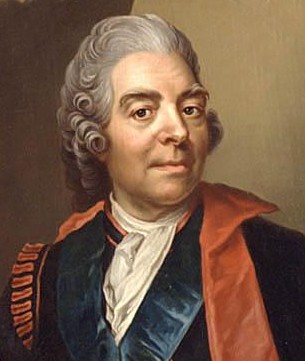
Gustaf Lundberg was a Swedish rococo pastelist and portrait painter. He trained and worked in Paris and later was appointed court portrait painter in Stockholm.

Pierre-Jacques Cazes was a French painter who specialized in religious and mythological subjects. He also taught several other French artists including François Boucher and Jean-Siméon Chardin.

Laurent Cars was a French designer and engraver.

Jean-Hugues Taraval was a French painter.

The Kitchen Maid is a 1738 oil-on-canvas painting by Jean Simeon Chardin. The painting features a young kitchen maid in a Hollandish kitchen, taking a break from her work. The work was popular, and Chardin had made four different copies; with three of them present in various collections in the modern day.
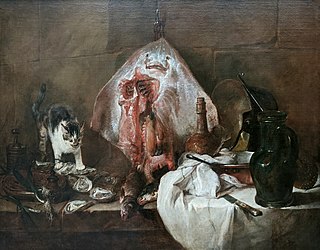
The Ray is a still-life painting by the French artist Jean Simeon Chardin, first exhibited at the Exposition de la Jeunesse on 3 June 1728, and long held by the Louvre in Paris.
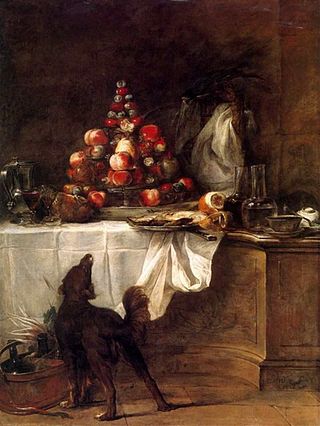
The Buffet is an oil-on-canvas still life painting executed in 1728 by Jean Siméon Chardin. It and The Ray were Chardin's reception pieces to the Académie royale de peinture et de sculpture; both are now in the Louvre.

























